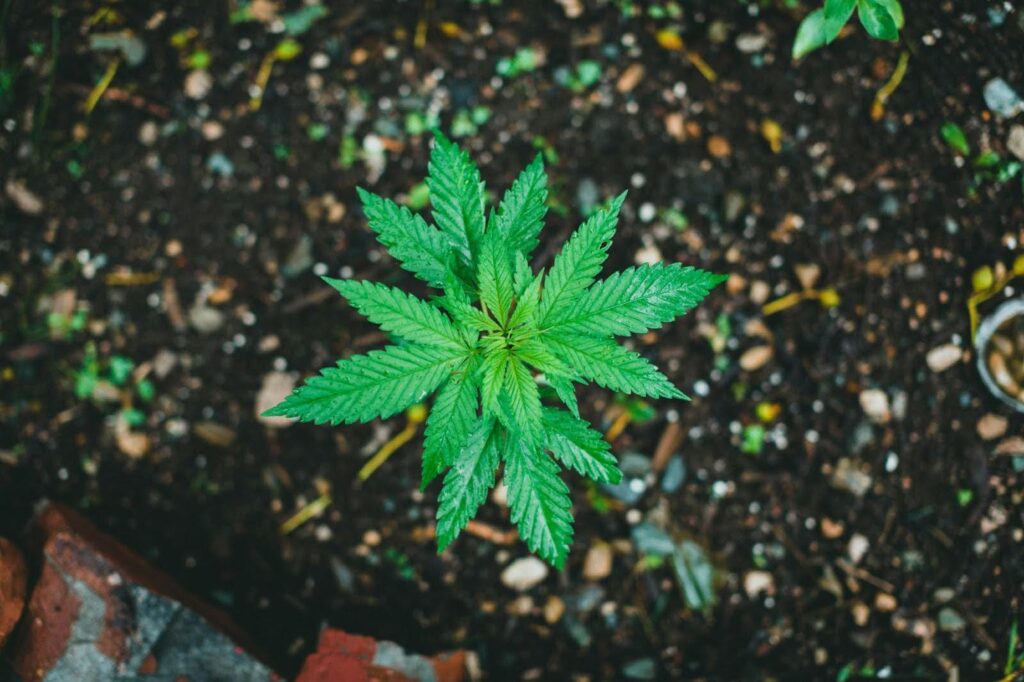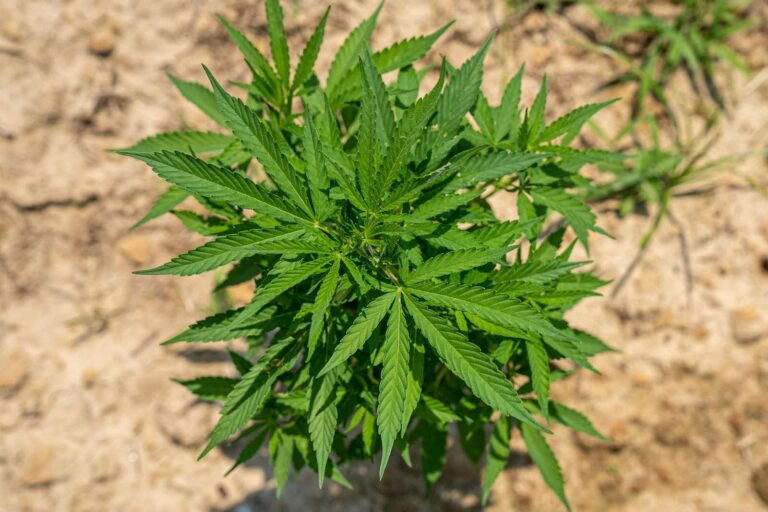Are your cannabis plants failing to thrive? The problem might be in the soil.
Soil compaction creates a barrier that limits root development and nutrient uptake. Compacted soils lack enough porosity to allow air, water, and nutrients to circulate, resulting in stunted growth, weak roots, and reduced yields.
Healthy cannabis plants require balanced soils that allow for strong root development, consistent water holding, and efficient nutrient uptake. Without these, your crops will not be able to do well.
Understanding the source of the problem allows you to take the proper corrective measures to restore the soil’s health. Let us look at the causes, signs, and solutions to ensure your cannabis crop grows well.
What is Soil Compaction in Cannabis Cultivation?
Compacted soil occurs when the particles in the soil are tightly pressed together, reducing the space for air and water to pass through.
The outcome is a denser soil structure that can be significantly influenced by plant growth. Compaction often occurs due to a number of factors:
Foot traffic: Walking on the soil will compress it over time
Heavy equipment use: Much weight is exerted on machinery, causing significant pressure on the soil.
Watering practices: If it is overwatered, compact layers start developing
Natural settling: As a natural process, undisturbed soil compacts itself over time.
Soil type: Clay-heavy soils are more prone to compaction because of their fine particle size and high water retention, whereas sandy soils are less likely to compact but may lose structure without organic matter.
While soil compaction is standard in all garden types, it is significantly problematic in cannabis. An aerated and loose soil structure is essential for the successful growth of cannabis plants, in which the roots grow freely and absorb water and nutrients without restriction.
Why Does Compaction Matter For Cannabis?
In compacted soil, essential spaces for air and water are reduced. This leads to:
Restricted root health: The dense medium prevents roots from growing, limiting their ability to support healthy plant growth.
Nutrient access issues: It is harder to reach oxygen and vital nutrients, starving plants of what they need to thrive.
Weakened plants: These will appear stunted in growth, have yellow leaves, and even weak structures, which, in general, will reduce the vigor of your crop.
Poor water retention: Compaction causes waterlogging, which then leads to either root rot or hydrophobic conditions that prevent water from passing through and instead pooling on the surface.
Reduced microbial activity: Beneficial microbes that help in nutrient cycling and soil health are compromised by compacted conditions.
Impeded gas exchange: Compaction limits the airflow that allows oxygen and carbon dioxide to be exchanged, which is essential for root respiration and plant metabolism.
Increased risk of erosion: Compacted soil is susceptible to erosion in outdoor conditions, where the critical nutrients are washed away and degrade the topsoil.
Degradation over time: Chronic compaction damages soil structure, making it more challenging to restore fertility and health over time.
Are you struggling with soil degradation from chronic compaction? PlanaCan lets you track cannabis yields in real time, capturing key decisions to address soil health, boost yields, and maximize profits.
Why Growers Need To Act
Cannabis cultivation demands precision. A compacted soil bed can result in:
Nutrient lockout: Essential nutrients become inaccessible to plants, leading to deficiencies and poor growth.
pH imbalances: Compacted soil disrupts the soil’s pH balance, affecting nutrient uptake and plant health.
Reduced microbial activity: Beneficial microbes, which play a crucial role in breaking down organic matter and aiding nutrient absorption, are significantly reduced.
Inhibited root growth: The roots cannot expand in the compacted soil, which hinders their ability to anchor the plant and absorb water and nutrients.
Less oxygen: The compacted soil reduces the air pockets that restrict oxygen flow to the roots, which is essential for root respiration and plant vitality.
Risk of waterlogging: Excessive water retention due to poor drainage can lead to root rot, which is a common problem in compacted soil.
Reduced overall plant yield: When all these problems are combined, soil compaction finally results in reduced quality and quantity of cannabis yields.
These factors critically affect plant yield and quality. Now, let’s understand how to identify soil compaction problems in cannabis plants.
Identifying Soil Compaction In Cannabis Cultivation
The first step to addressing soil compaction is recognising it. Compacted soil can easily be identified by clear indications that are easy to note, which can save your plants from significant stress if discovered early:
Hard, dense soil: If the soil resists digging, tilling, or penetration with a tool, it is probably compacted. This is particularly evident after watering.
Poor plant growth: Stunted growth, curled or drooping leaves, and foliage discolouration are common symptoms of poor plant growth. These symptoms usually reflect struggling roots that cannot access the necessary nutrients and water.
Surface crusting: A surface layer of soil may harden and become crusty, preventing water and air from reaching deeper layers in the soil.
Soil shrinkage: The pull at the edges of containers signifies a shrinking soil, or at least one that is not evenly retaining moisture in view of its compaction.
Uneven water absorption: Water collects on the surface following watering. This is a sure indicator of compaction, poor drainage, and low soil permeability.
How to Confirm Compaction
You can quickly identify soil compaction by applying simple observation techniques such as:
Probing: Dig a trim stick or screwdriver into the soil or use a soil probe. If you encounter resistance immediately or frequently, the soil is likely compacted. Larger areas can be measured with a penetrometer to quantify levels of compaction.
Visual examination: Observe for surface crusting, water pooling, or dry patches. Crusting and uneven water absorption are signs of compacted soil. Water the soil and check whether the water penetrates or remains on top of the soil.
Root analysis: Gently remove a plant from its pot and observe the roots. If the roots seem constricted, growing in circles, or tightly packed in the upper part of the soil, compaction will prevent them from spreading out and growing.
Drainage test: Add a measured quantity of water to a given portion of the soil and record how long it takes for the water to drain. Slow drainage or water collecting on the surface means poor soil permeability due to compaction.
Identifying these issues early will save your plants from long-term damage and set the stage for practical corrective actions.
Poor planning leads to waterlogging in the soil and diseases such as root rot. PlanaCan‘s interactive calendar allows you to plan yields, track tasks, and maintain all cultivation information in one place, promoting healthier plants and avoiding omitted steps.
So, what are the solutions to correct soil compaction in cannabis? Let us find out.

Solutions to Soil Compaction In Cannabis Cultivation
Breaking up tight soils and improving their texture is essential for rejuvenating plants and creating a thriving growth environment.
Soil compaction not only enhances root health but also improves nutrient uptake, enhances water retention, and stimulates plant vitality. Here’s the right way to tackle it:
Loosen compacted soil: Use a hand tool, aerator, or garden fork to break up the dense layers of soil. Be careful not to damage the roots, especially when dealing with young or fragile plants. Use mechanical aeration tools for large areas to save time and effort.
Add perlite or pumice: Mixing perlite, pumice, or similar aerating additives into the soil improves aeration and prevents future compaction. These materials create more space for air and water movement, promoting healthier root growth and better nutrient uptake.
Add soil amendments: Organic matter such as compost, coco coir, peat moss, or aged manure can improve the soil’s texture, add drainage, boost microbial activity, and provide your plants with essential nutrients.
Gypsum to clay soils: In clay-heavy soils, adding gypsum can help break up the compacted layers and improve soil structure. Gypsum works by binding clay particles, reducing their stickiness, improving aeration and water movement.
Water wisely: Overwatering is one of the leading causes of compaction. Water with a schedule that dries the soil slightly between waterings. Choose drip irrigation systems, which allow water to reach the roots directly without soaking the soil.
Add earthworms: Earthworms aerate the soil through their tunneling activities. They improve soil structure, increase microbial populations, and promote nutrient cycling. Adding worm castings will further enrich the soil.
Add organic mulch: This protects the soil surface and retains moisture, prevents crusting, and prevents compaction caused by frequent heavy watering or rain.
Use cover crops: Cover crops such as clover or rye add organic matter to improve the soil structure. As they grow, their roots dig up and break the compacted layer in the soil naturally. Returning these crops to the tilled soil adds more organic matter and nutrients to it.
Regular maintenance and thoughtful practices can avoid recurring compaction and ensure a healthy growing environment for your cannabis plants.
Now that we know the solutions to cure cannabis of soil compaction let us also learn the ways of preventing that from happening.
Preventing Soil Compaction In Cannabis Cultivation
Prevention is better than cure. Proper soil care through consistent and proactive means can save you precious time and effort in the future. Here are some of the best practices to help avoid compaction in the first place:
Use the correct soil mix: The structure will be loose if the soil is combined with some aerating additives such as perlite, vermiculite, or pumice. Coco coir or peat moss can also be included to increase soil aeration and water retention.
Avoid overwatering the soil: Water your plants regularly, but do not let the soil become oversaturated, as this tends to compact with time. Irrigate using a drip system so that water penetrates the roots without drowning them.
Aerate frequently: Lightly aerate your soil between watering cycles using a fork, spike, or other aeration tool. This action maintains porosity and hardens the soil over time.
Limit pressure on soil: Avoid compressing the soil during planting or through excessive handling. Consider using raised beds or containers to reduce the likelihood of external pressure compacting the soil.
Rotate crops: For outdoor cultivation, rotating crops or using cover crops can naturally aerate the soil and reduce compaction over multiple growing cycles.
Wet soils should not be trenched because moisture increases the soil’s sensitivity to compacting. Instead, work with dried soil, just enough before digging or planting. This minimizes compression due to pressure.
Are you failing to control your cannabis? PlanCan provides an interactive calendar for planning yields, managing everyday tasks, and avoiding mishaps such as overwatering. Schedule drip irrigation to keep roots hydrated while preventing soil compaction. Make adjustments as necessary, and keep all cultivation data in one place so nothing falls through the cracks.
Next up, we will discuss the role of container selection and soil porosity for your cannabis.
Role of Container Selection And Soil Porosity
Your choice of container matters when it comes to soil health and plant development. This impacts root growth, nutrient uptake, and plant overall vitality.
With the proper container, better roots develop and support both healthier water management and more excellent aeration. Nutrients also tend to cycle faster in well-designed containers. Here is why:
Fabric pots: Compared to traditional plastic pots, fabric pots promote better aeration and prevent compaction. The breathable material allows excess water to evaporate, preventing overwatering and supporting root pruning.
Root pruning occurs when roots reach the edges of fabric pots, encouraging the growth of a denser, healthier root system.
Improved porosity: Fabric pots encourage air circulation and water distribution, reducing the likelihood of compaction and improving root health. The porous structure ensures consistent moisture levels, helping roots access water without the risk of waterlogging.
Better drainage: Breathable containers allow for proper and adequate drainage of excess water, lowering the risk of root rot. It also provides for easy microbial activity in the roots. Adequate drainage also diminishes the possibilities of nutrient accumulation and pH imbalances within the soil.
Material benefits: Containers made from breathable fabrics or other porous materials reduce the chance of overwatering and balance the growing environment for cannabis plants.
They are also lightweight, reusable, and adaptable to different growing conditions, making them a good choice for indoor and outdoor cultivation.
Temperature regulation: The fabric pots allow heat to be dissipated from the soil, increasing the rate of dissipation. This is especially good outdoors, where soil temperatures tend to fluctuate. Stable soil temperatures ensure consistent plant growth.
Switching to fabrics or any breathable container type can improve the health and vigor of marijuana plants and their yield. Thus, container selection can be a minor yet meaningful step towards optimal cultivation conditions.
Conclusion
Soil compaction can seem like a minor issue, but it can significantly affect cannabis plants. Thus, identifying and addressing it at an early stage is critical to healthy root development, maximum nutrient uptake, and strong plant growth.
Preventive measures, such as choosing the right soil mix, regular aeration, and proper containers, can help you easily maintain ideal soil conditions and avoid recurring problems.
To take your cannabis growing to the next level, PlanaCan offers innovative solutions to maximize yields and manage crops effectively.
PlanaCan streamline the process of growing cannabis by automating the tasks from planting to harvesting using customizable templates. Growers can personalize each step based on the specific strain or cycle and schedule tasks onto an interactive calendar with a few clicks. It also provides a visual timeline for planning months in advance while managing daily activities, allowing dynamic needs through adjustable tasks. It also centralizes information for the full team’s visibility and ensures that there is a consistent workflow without missing any steps.
It also means healthy plants, while a well-organized workflow ensures success in each cultivation stage. With all the tools offered by PlanaCan, you can optimize all of your operations and focus even more on growing more assertive, bigger plants with higher yields.
Schedule a free call today to learn how PlanaCan can transform your cannabis cultivation process.




